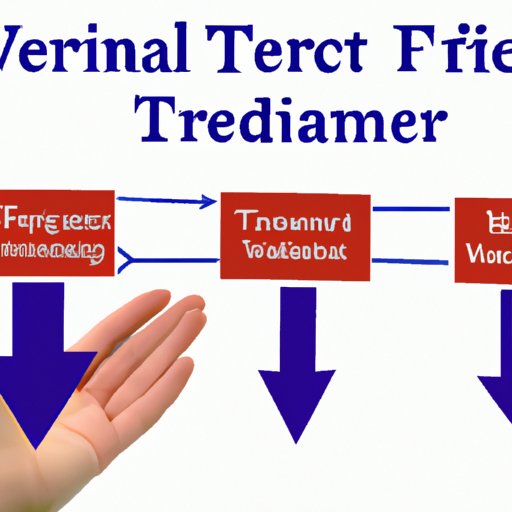
I. Introduction
Fibroids are a common condition that affects many women of child-bearing age. They are noncancerous growths that develop in or around the uterus. Although most fibroids do not cause symptoms, they can have an impact on fertility and pregnancy. This article aims to explore the correlation between fibroids and fertility, and provide information on how to manage this condition when trying to conceive.
II. Exploring the Correlation Between Fibroids and Infertility
Fibroids are usually benign growths that develop within or on the uterus. They are made up of muscle and fibrous tissue, and can vary in size. Fibroids can affect fertility in several ways, including by altering the shape of the uterine cavity and interfering with the implantation of an embryo. They can also cause inflammation, leading to the production of chemicals that are toxic to sperm and oocytes.
While fibroids don’t always cause infertility, they can reduce the chances of getting pregnant. Women who have fibroids are more likely to experience difficulties in conceiving and may require fertility treatments or surgery to remove the fibroids before proceeding with assisted reproductive techniques.
III. The Impact of Fibroids on Pregnancy
Although fibroids typically do not interfere with conception, they can increase the risk of complications during pregnancy, including preterm labor, placental abruption, and fetal growth restriction. Women with fibroids who become pregnant have a higher chance of experiencing miscarriage, preterm labor or early delivery, and cesarean delivery. Fibroids during pregnancy can cause pressure and pain in the pelvic region, back pain, and discomfort during sex.
IV. Understanding the Different Types of Fibroids
There are several types of fibroids that can develop in or around the uterus. Subserosal fibroids grow on the outer wall of the uterus and may put pressure on surrounding organs. Intramural fibroids develop in the muscle layer of the uterus and can affect the shape and size of the uterine cavity. Submucosal fibroids grow in the inner lining of the uterus and can block the fallopian tubes and prevent the egg from reaching the uterus.
While all types of fibroids can interfere with fertility, submucosal fibroids are more likely to affect pregnancy outcomes and require treatment due to their location and the potential impact on implantation and embryo development.

V. Treatment Options for Fibroids and Infertility
Women with fibroids who have difficulty conceiving can benefit from a range of treatments designed to manage or remove the fibroids. These treatments include medications, surgery, and alternative therapies. Medications can help manage symptoms associated with fibroids, but cannot cure the condition. In contrast, surgery is often the best option for women with fibroids who want to conceive because it can remove any obstructions that may be preventing implantation of the embryo or causing difficulty for sperm and egg to meet. Surgery can be done via laparoscopy, hysteroscopy, or myomectomy to remove the fibroids. Hysterectomy, the surgical removal of the uterus, is a last resort and is typically only recommended for women who have completed childbearing or who have large or rapidly growing fibroids.
Alternative therapies like acupuncture, herbal remedies, and dietary supplements are not clinically proven to cure fibroids, but they may help alleviate some symptoms associated with the condition and can boost fertility in some cases.
VI. Trying to Conceive with Fibroids
Many women with fibroids have been able to conceive after treatment. It is important to work closely with your doctor or fertility specialist to determine the best course of action for your unique situation. Some women may be able to conceive naturally after the removal of fibroids, while others may require medical treatment or assisted reproductive techniques.
It is important to maintain a healthy lifestyle with a balanced diet and regular exercise to prevent the development of fibroids and improve overall fertility. Women can also try natural remedies such as castor oil packs and yoga to help manage symptoms and promote optimal reproductive function.
VII. Addressing Common Concerns and Misconceptions about Fibroids and Pregnancy
There are several misconceptions surrounding fibroids and pregnancy. One common misconception is that fibroids can be passed on to the baby. While this is possible, it is rare and occurs only in certain cases where there is a genetic predisposition for fibroids. Another misconception is that curettage can lead to fibroids. This is not true, as curettage is a medical procedure that involves scraping the lining of the uterus and does not directly cause the growth of fibroids.
VIII. Conclusion
Fibroids can be a challenging condition for women who want to conceive. Understanding the correlation between fibroids and fertility is essential in identifying the right course of treatment for each woman’s situation. It is essential to work with healthcare providers and fertility specialists to develop a plan that will manage or remove fibroids while minimizing any potential risks to mother or baby. By seeking medical advice and support, women with fibroids can achieve a healthy and successful pregnancy.




